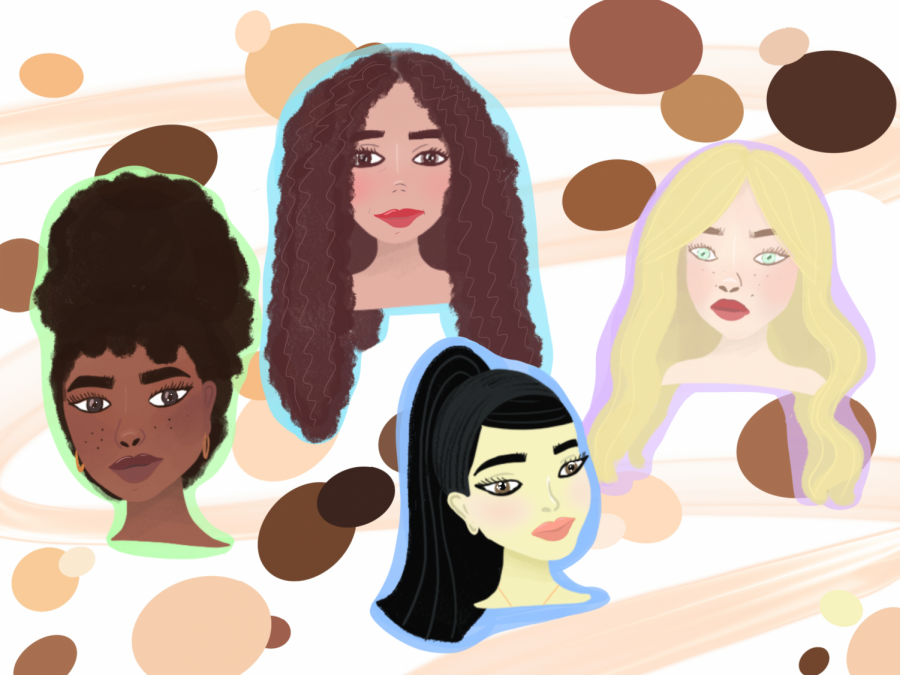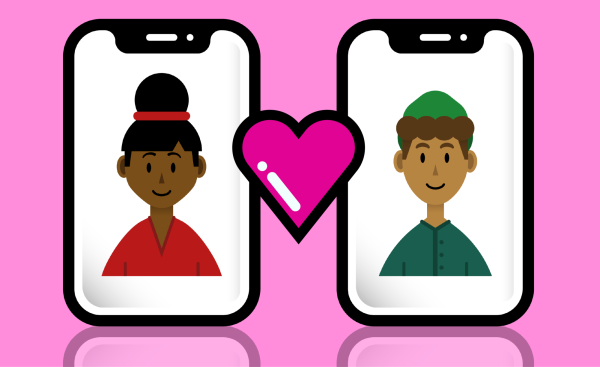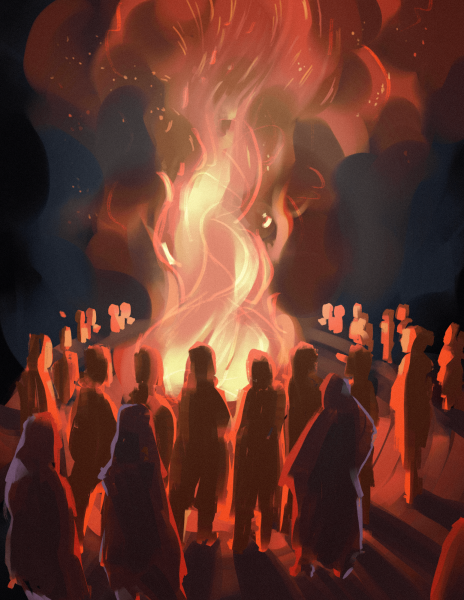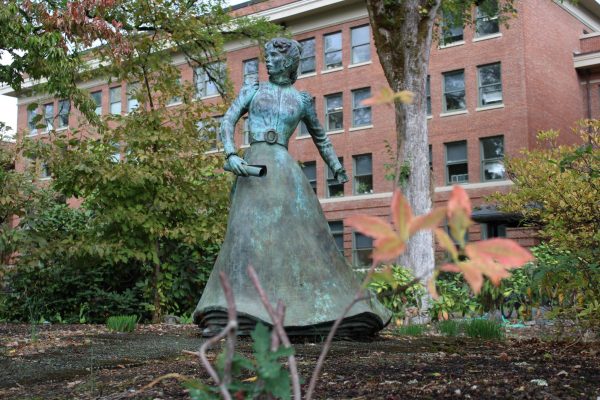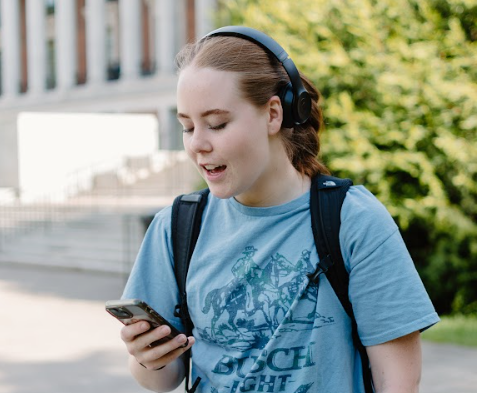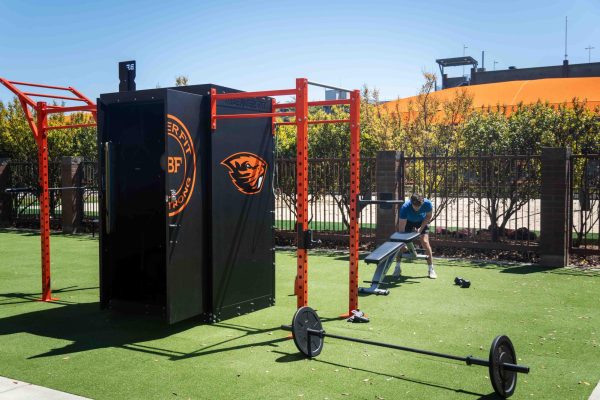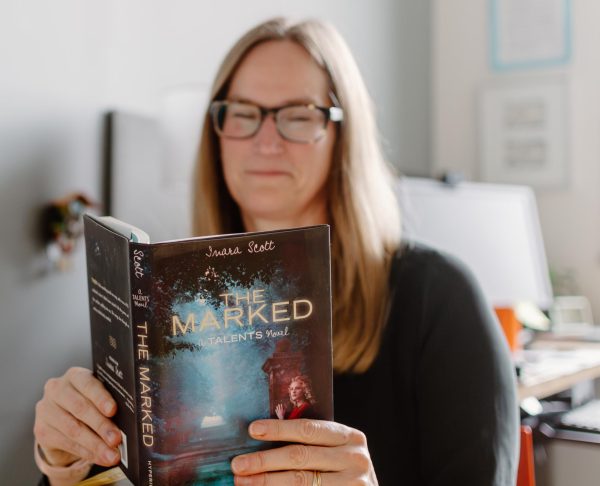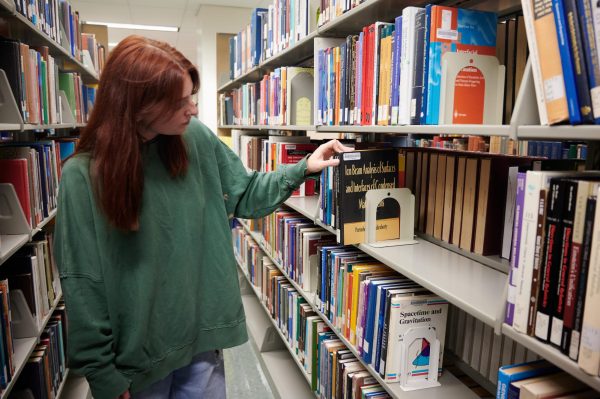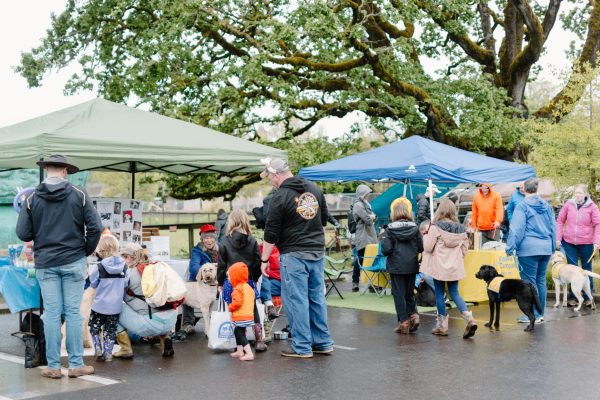Makeup: Decades Defined by Crossovers
November 12, 2020
If you have always wondered what women your age used to wear some decades ago, maybe you have found a picture of two in old magazines and think that was such a great look. What did those women do to look so fashionable, here is a listicle of the most popular makeup trends through the years.
1950s
In the 50s, it was popular to see stick foundation and mascara applied only on the upper eyelashes, although that has changed nowadays. It was very popular to see colorful matte colors with no shimmer and rouges that were applied to the apple of the cheek. In this decade, the makeup focused on enhancing women’s lips cheeks and eyebrows with colorful tones.
Lillian Carman, a second year Studio Art and Art History student at OSU, said she feels as though makeup has transitioned from more of a rigid utility use into a freeform expressive medium.
“For example, in the 1950s there were so many rules on how a housewife may have worn makeup in order to make herself more presentable to others,” Carman said via email. “Nowadays no such rules are dictating who can wear makeup, how, and for what occasion. Eyeshadow diagrams may be useful for beginners, but by no means are the standard. I for instance find lipstick to make a wonderful eyeshadow.”
1960s
In the 60s, the ideal makeup style was focused on opaque eye shadows in pastel tones. Some people applied shadow using the popular cut crease technique, which is still used nowadays.
“I think a slightly under-appreciated style of makeup that is due for a comeback is the mod makeup trends of the 1960s, worn by women like Twiggy and Brigitte Bardot,” Carman said. “I think this era lends itself really well to camp and exaggeration which is evident with movies like ‘What a Way to Go!’. I feel like the 60s is often disregarded for how costume-y and specific the fashion was with its bright colors, beehives, bubble flips, bold, I think there’s a lot of untapped potential in that decade.”
1980s
In the 80s, the fashion made a turn. While in the 60s matte colors were the ‘look,’ in the 80s, bright colors were the new fashion. Heavy pink blush and colorful eyeshadows such as pink, purple and blue became popular.
“I believe modern makeup is constantly taking aspects from older styles of makeup and modifying them. I think this revitalization is innovative because it creates looks that are both fresh and slightly recognizable,” Carman said.
“An example of this would be the pencil-thin eyebrow trend of the 1980s coming back this year while being mixed with the new colorful graphic eyeliner trend. Personally, my favorite style was the harshly geometric, androgynous, and bold eyeshadows that went all the way to the temple from the 1980s à la Grace Jones.”
1990s
In the 90s, many old fashion looks came back, such as the brown lipstick. The face and body glitter and rhinestones were everywhere and everyone was using them.
Zahra Joseph, a fifth year Design and Innovation Management student at OSU, said through the decades, makeup has gone from a slight enhancement to artistic ability.
“I think with makeup, as with a lot of trends, certain aspects usually end up making a comeback such as the lip liner and gloss look that was popular in the 90’s and early 2000s,” Joseph said via email. “My favorite style is probably more current, which is colorful eyeshadow and lips with a more natural base.”
2000 -2020s
Although many brands have the basic shades of foundation light, medium and dark, these shades do not cover all the beautiful shades of colors that our identities represent, so many companies have introduced foundations with different shades to cover a wider majority of customers, for example the 40 shades of Fenty Beauty released around 2018.
“I identify as a Black woman. As far as representation, the beauty community definitely has a long way to go like most industries. Foundation ranges have been improved, but that it is mostly from the pressure of Fenty beauty releasing 40 foundation shades,” Joseph said.
“Eyeshadow and lip products that work on richer skin [are] still a bit difficult to find. In addition, it is hard to find most major brands being inclusive in who they repost and include in their model campaigns and that is just the visual aspect.”
Makeup trends went through a lot of changes through the ages, and while we might not be able to control that change we can enjoy the current trends and make our best effort to increase the inclusivity in the products that we consume by proactively sharing our opinion with the makeup industry.
From the slick foundation in the 50s and the opaque eye shadows in the 60s, every decade had its own style. We must not forget about how in the 80s Heavy pink blush and colorful eyeshadows such as pink, purple and blue became popular.
While in the 90s the makeup style was focused more towards glitter and rhinestones, and we might not see some of this fashion once again but we can see how every year more brands introduce new products to satisfy the necessities of its customers, such as when Fenty beauty released 40 foundation shades.
Sources:
https://millihelen.jezebel.com/eyeliner-and-liner-notes-the-1960s-1739002707
https://www.allure.com/gallery/makeup-brands-wide-foundation-shade-ranges


